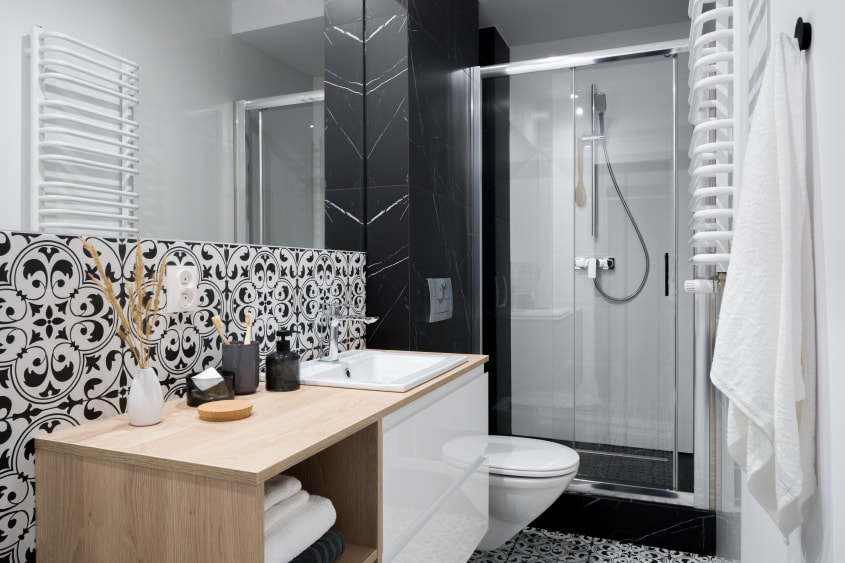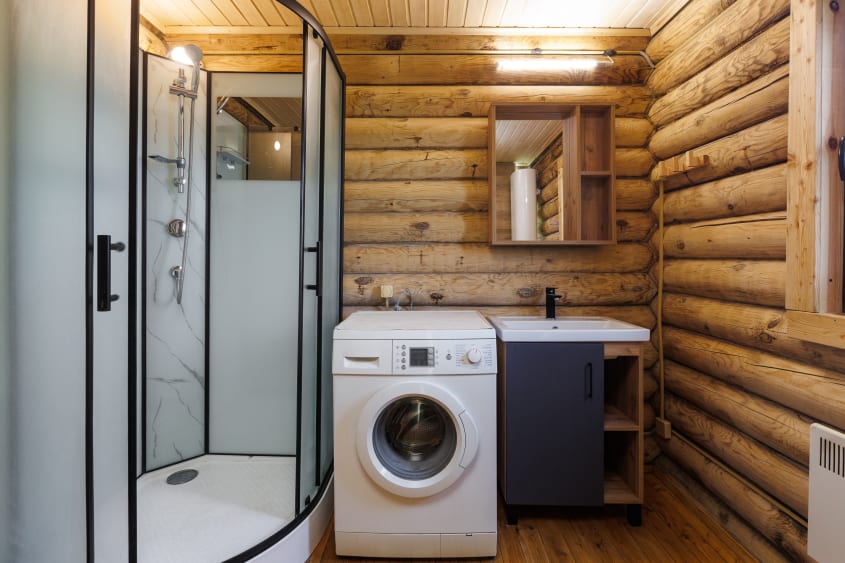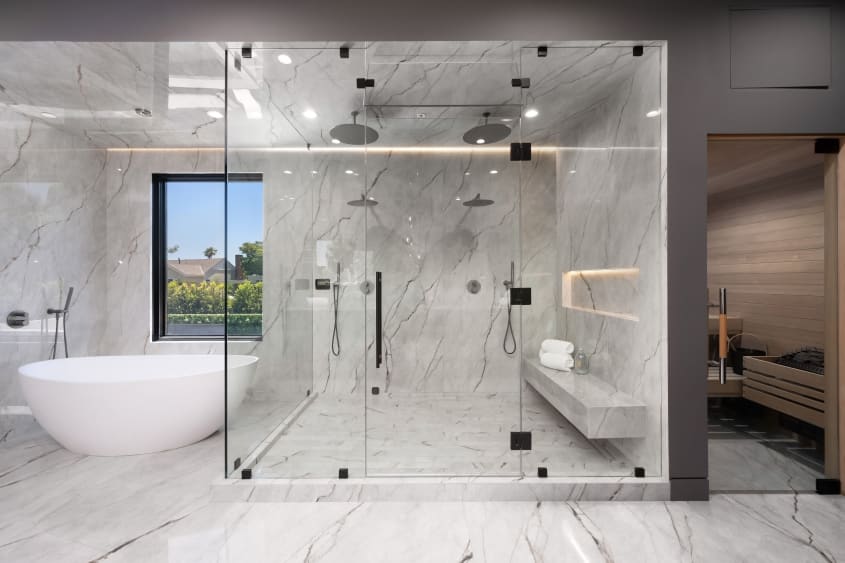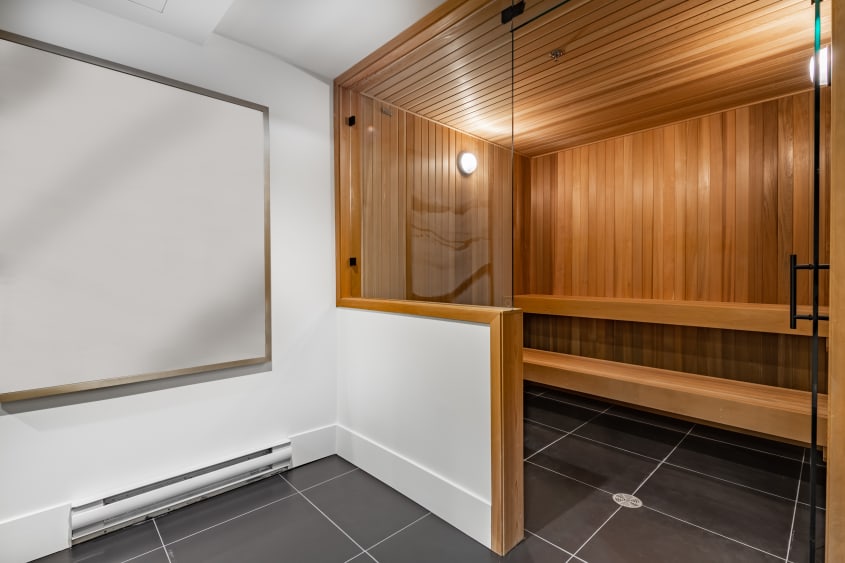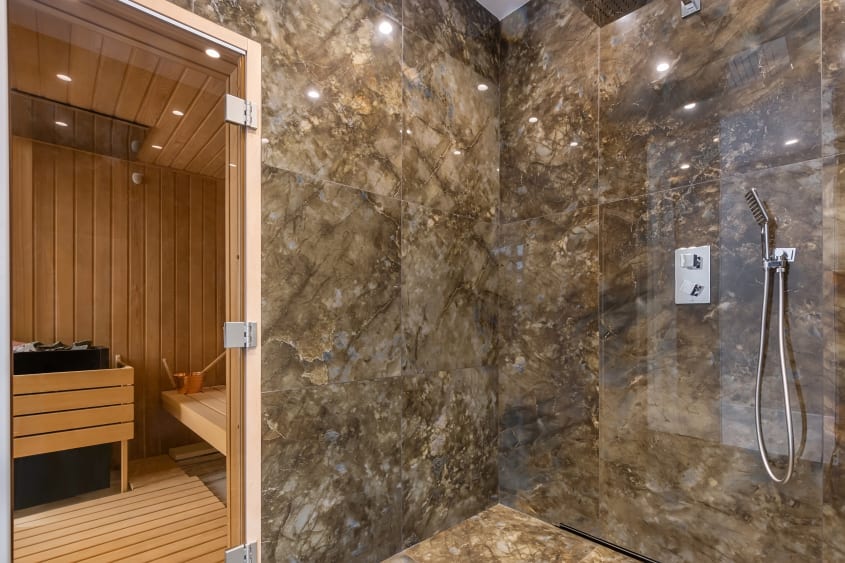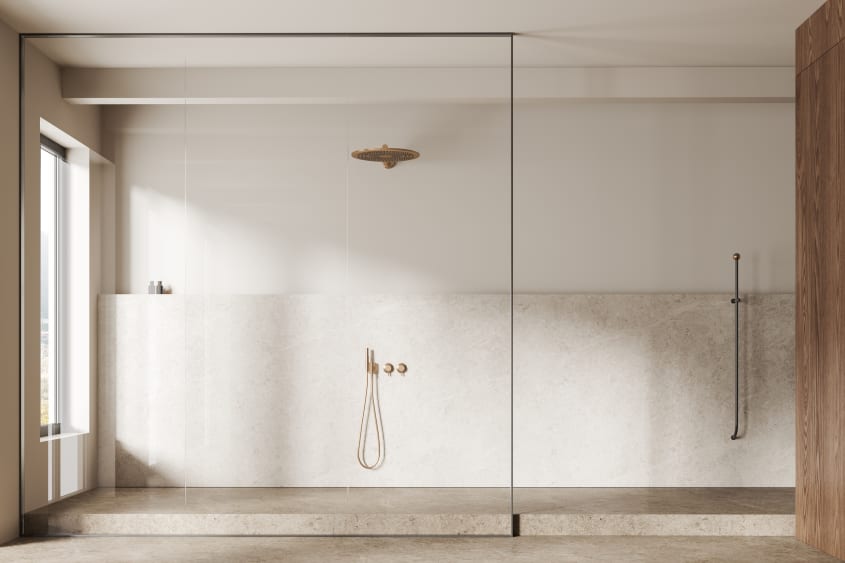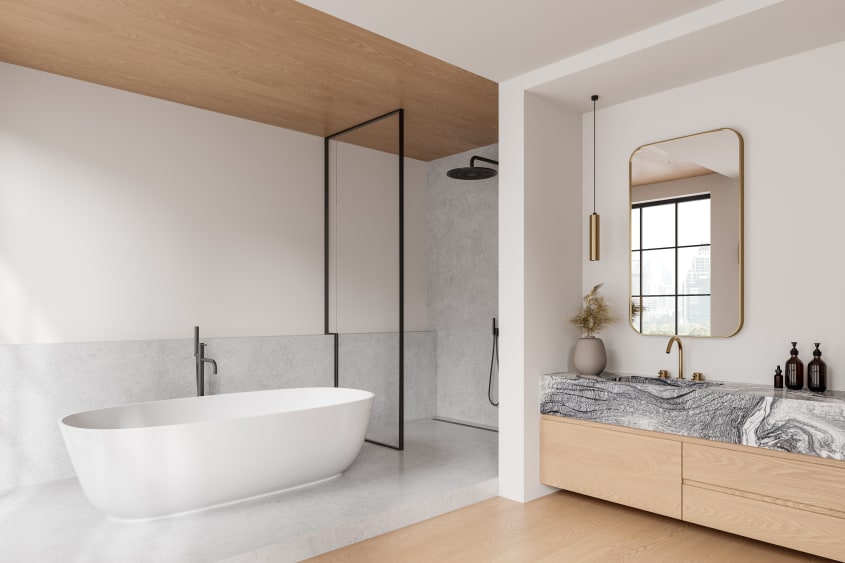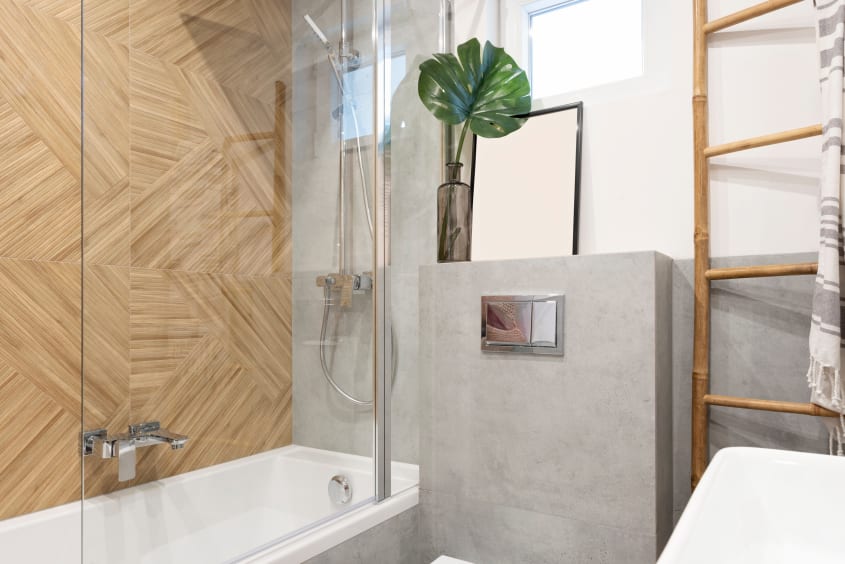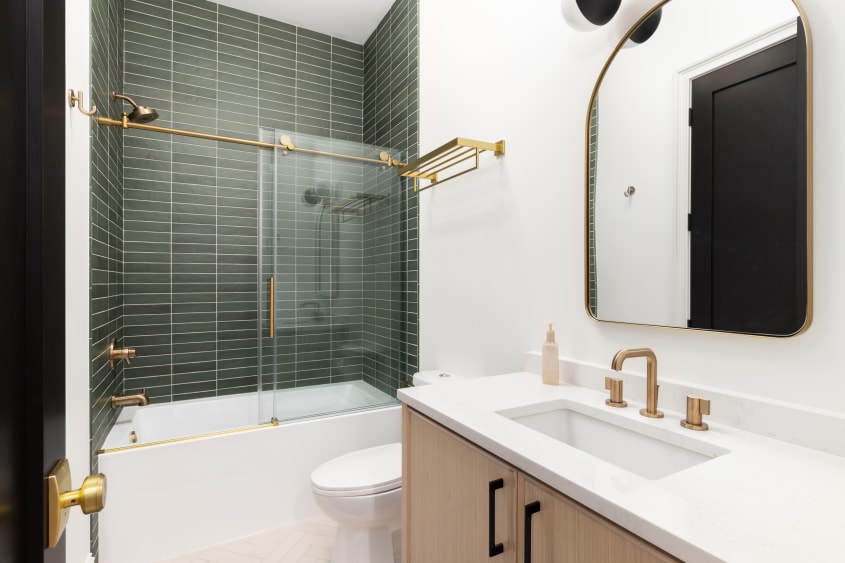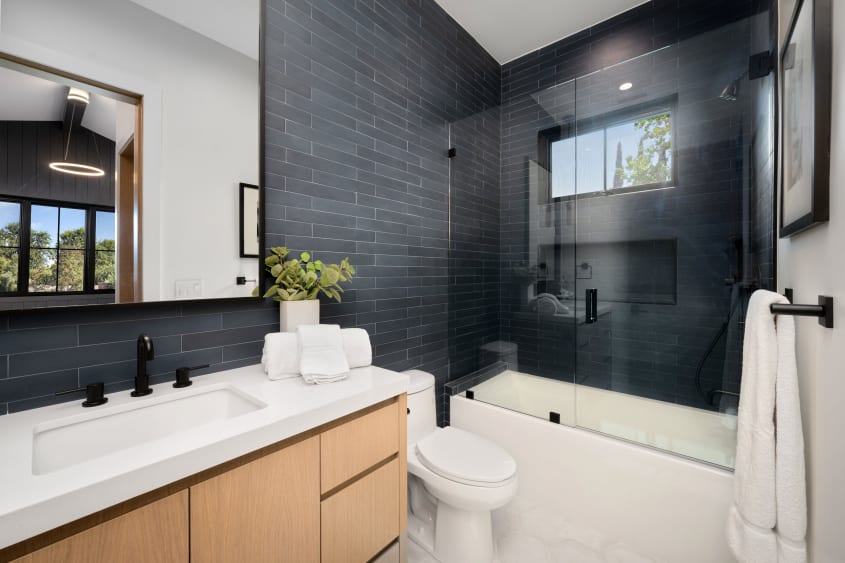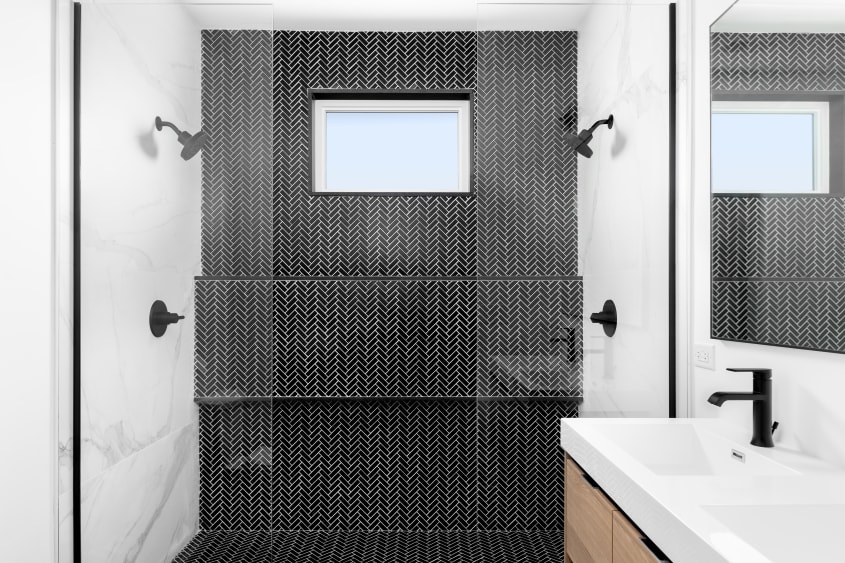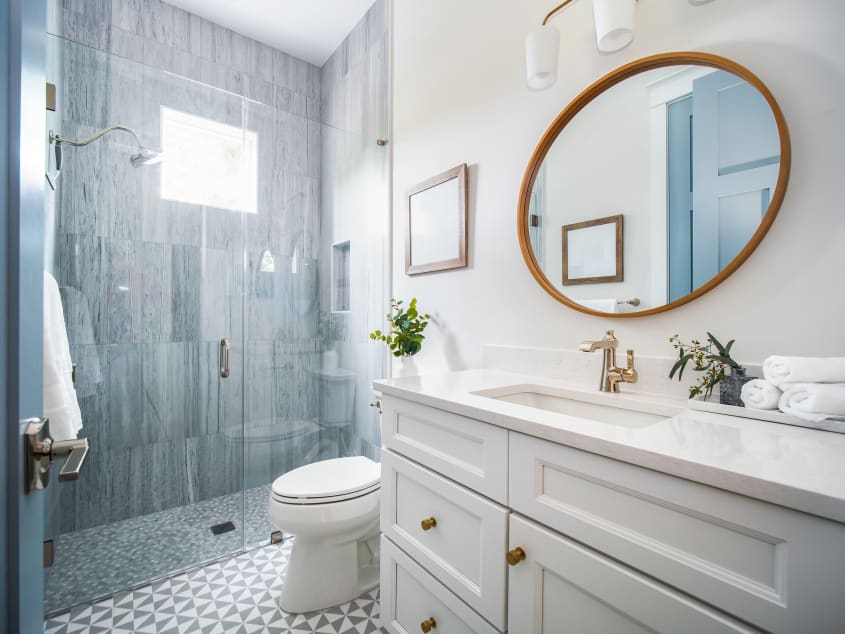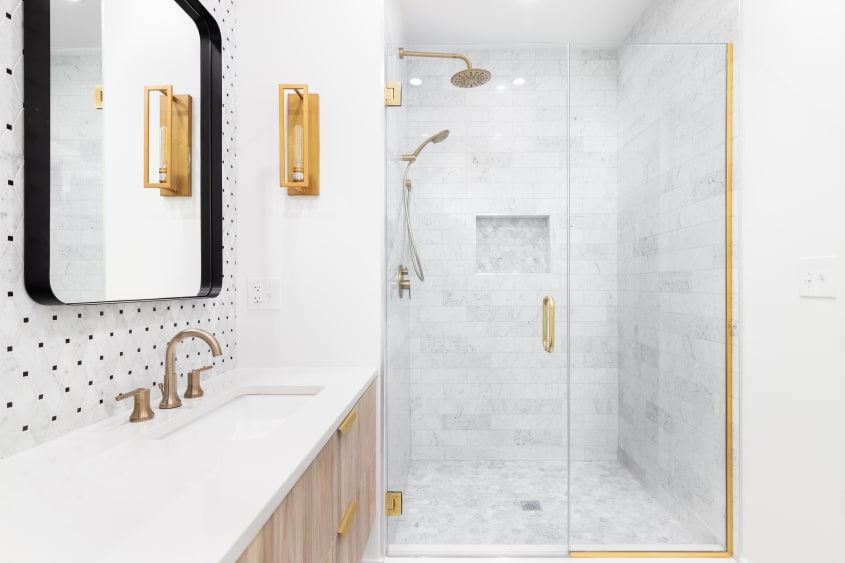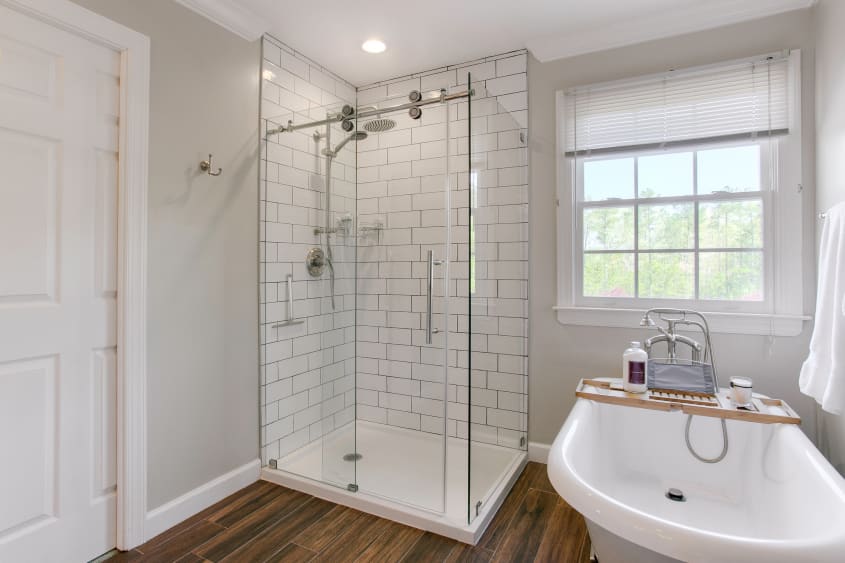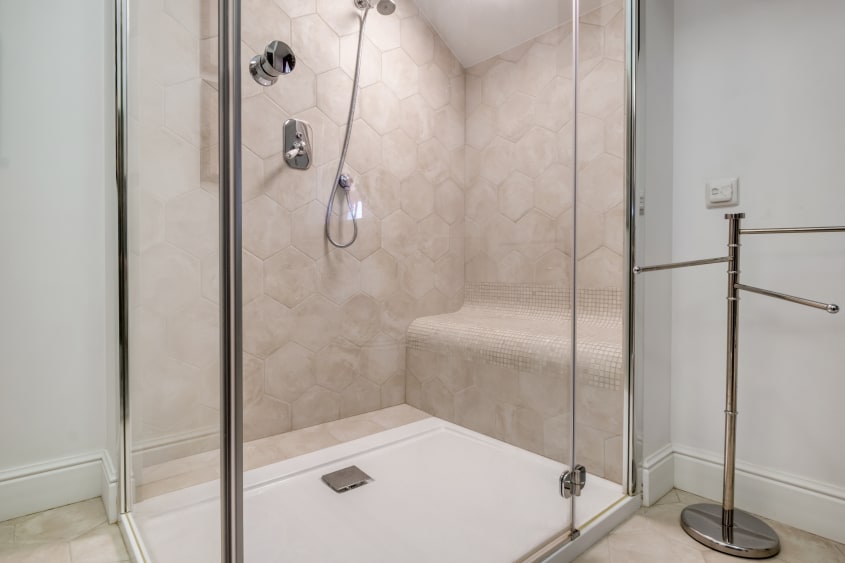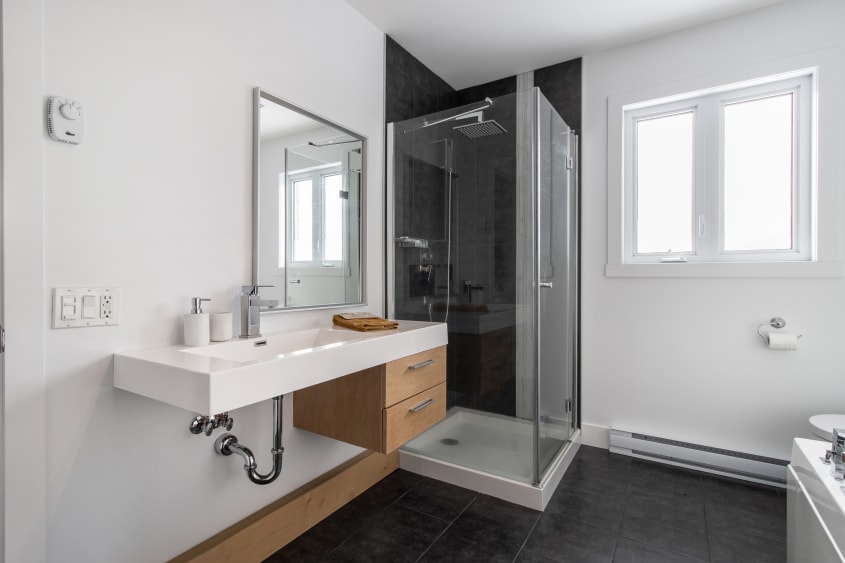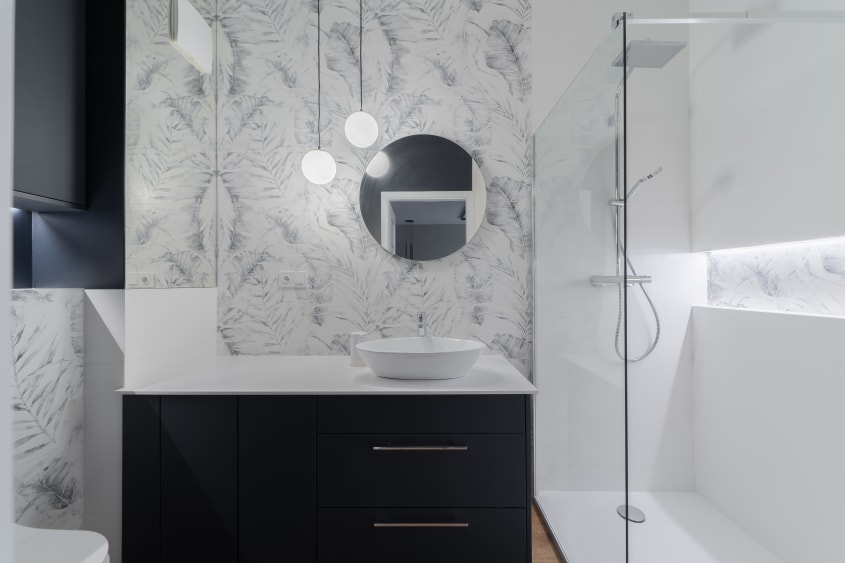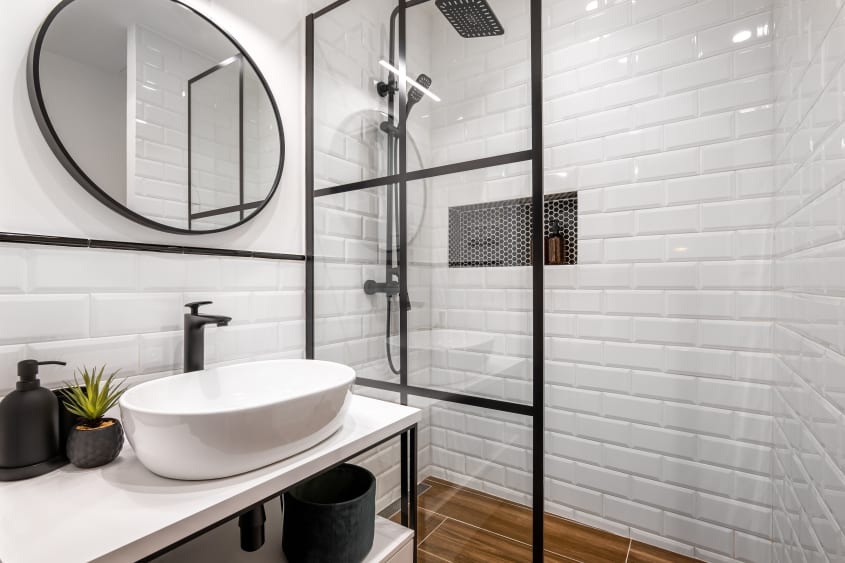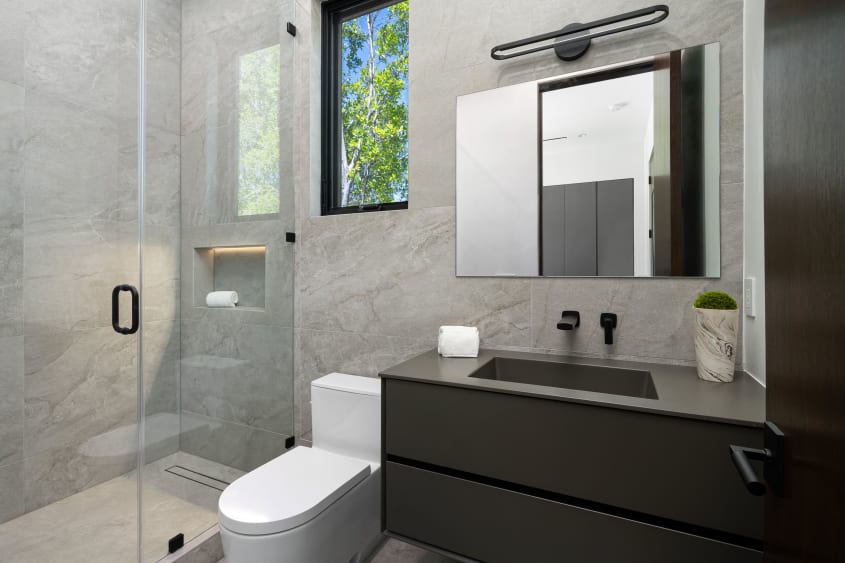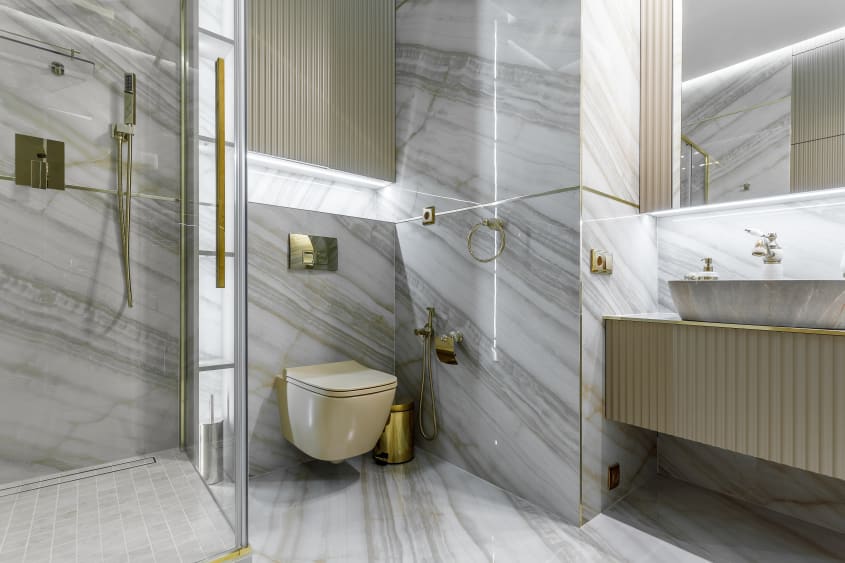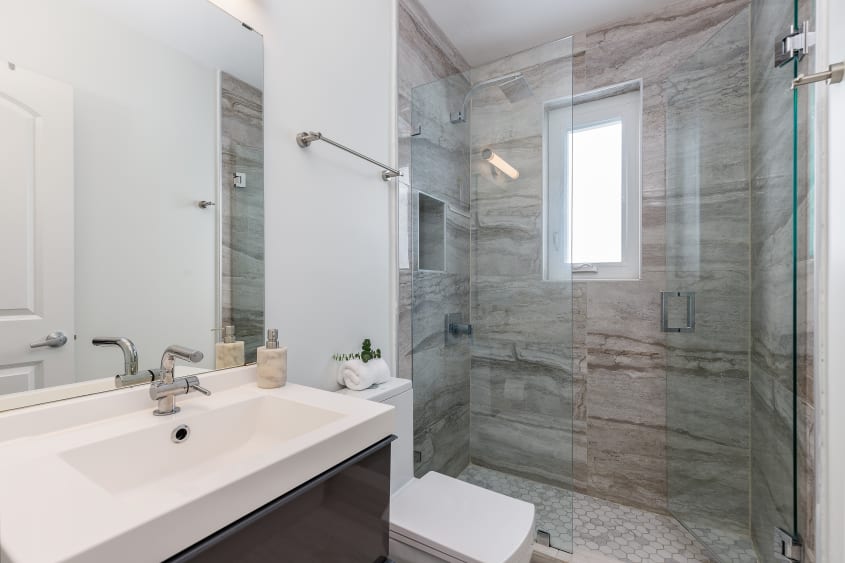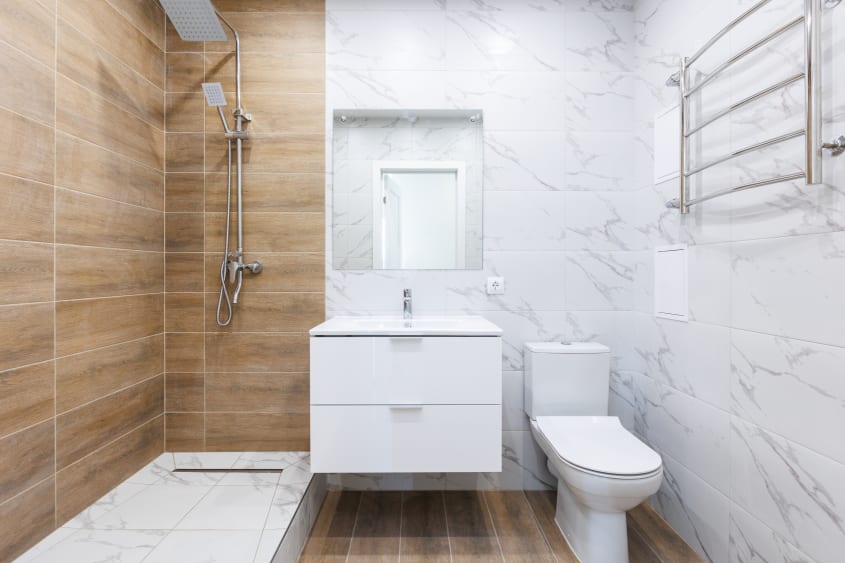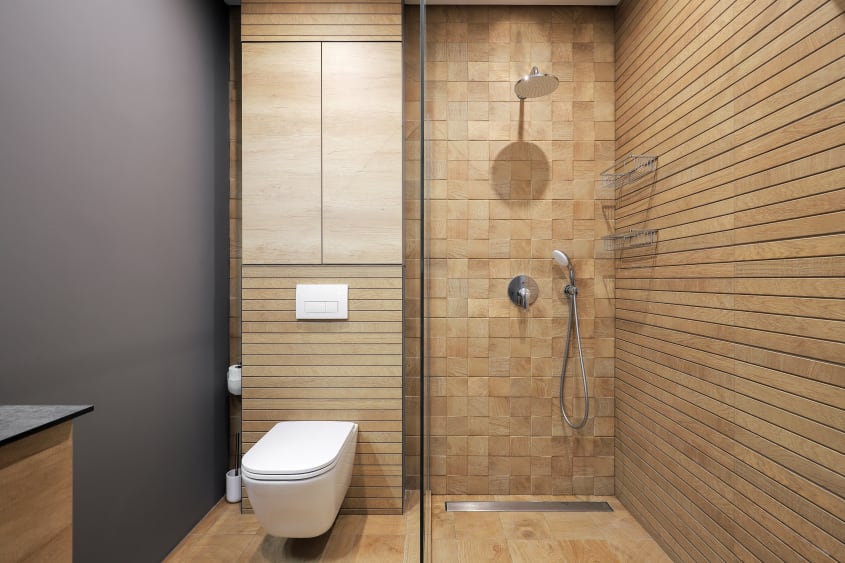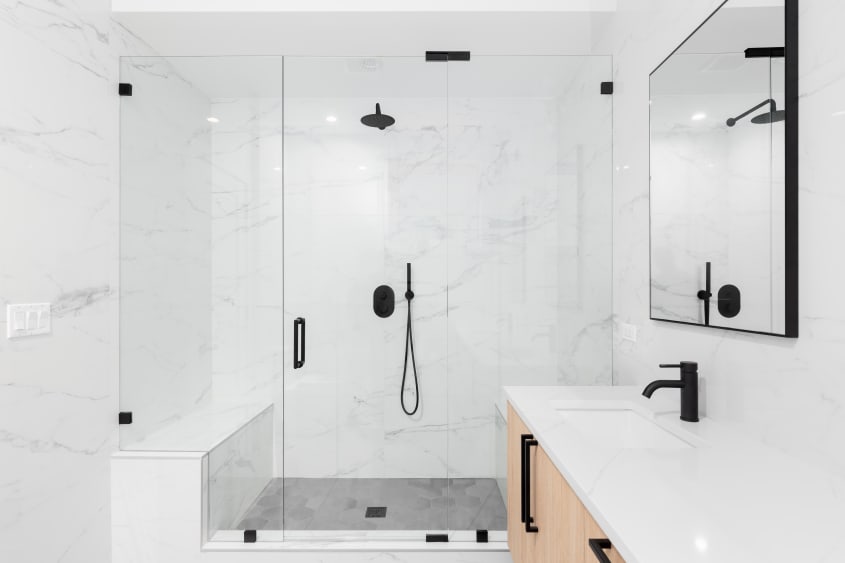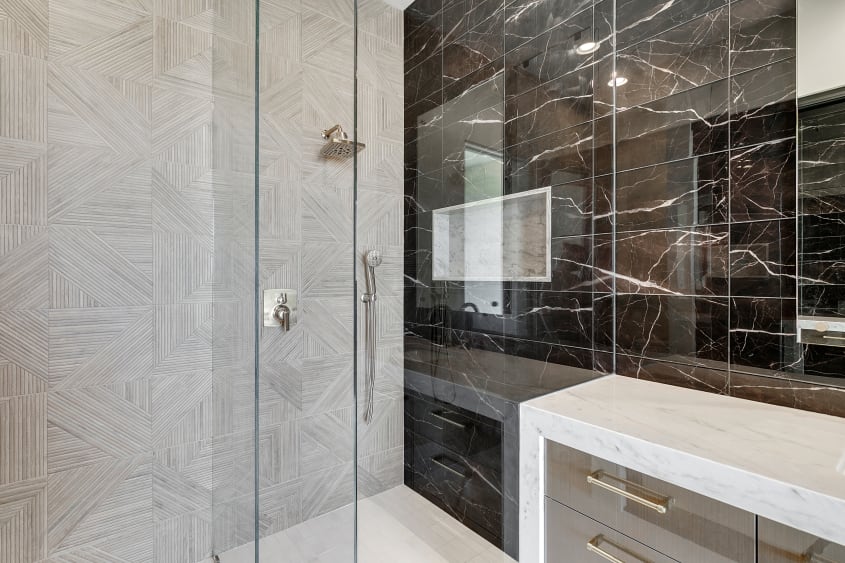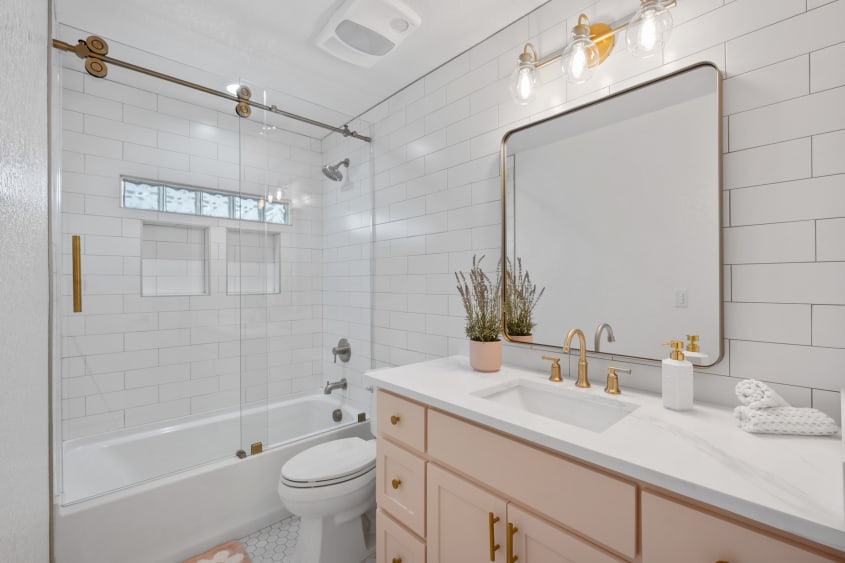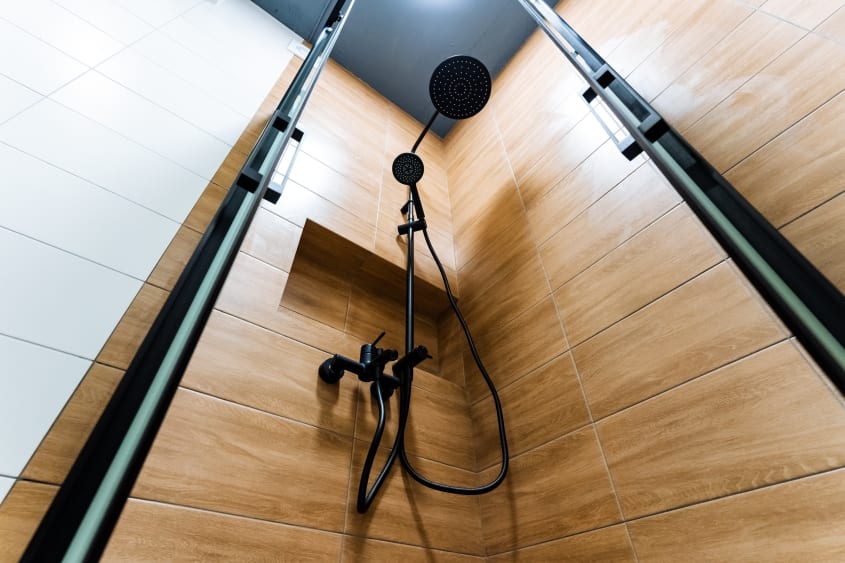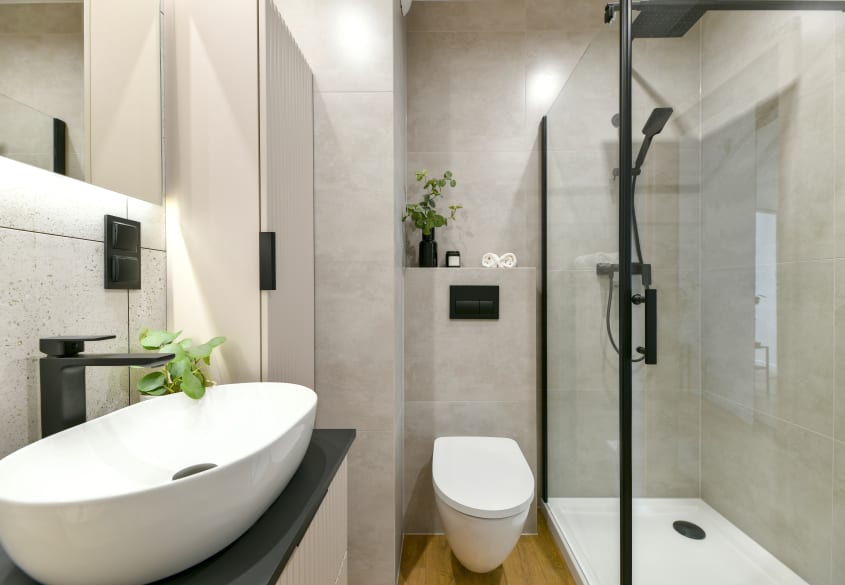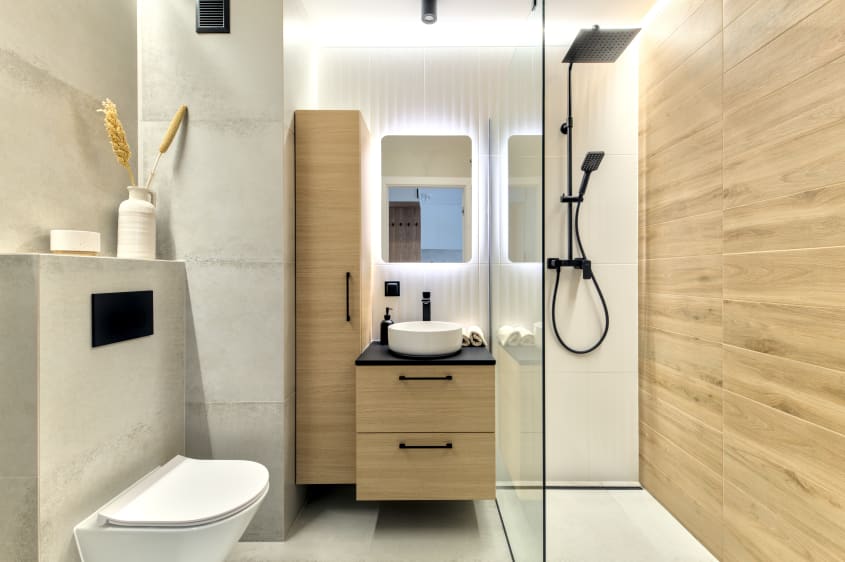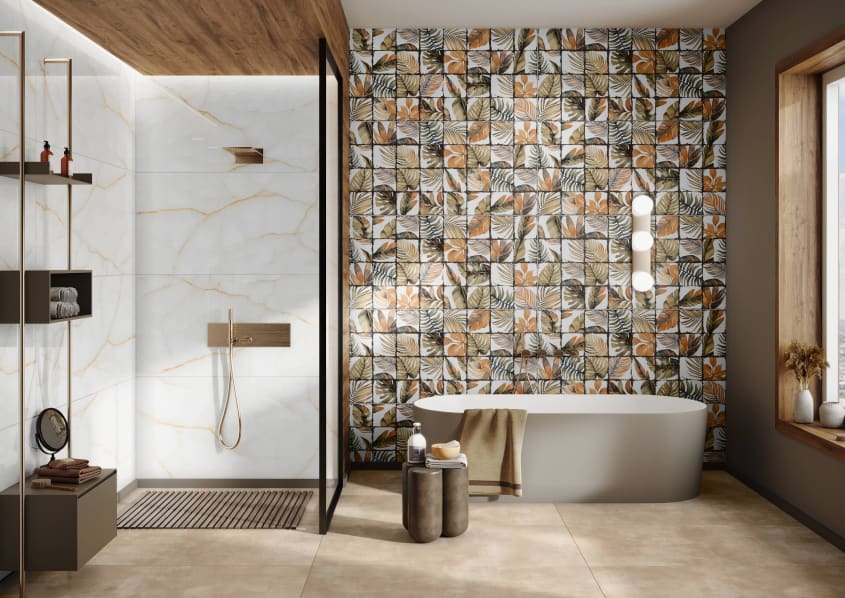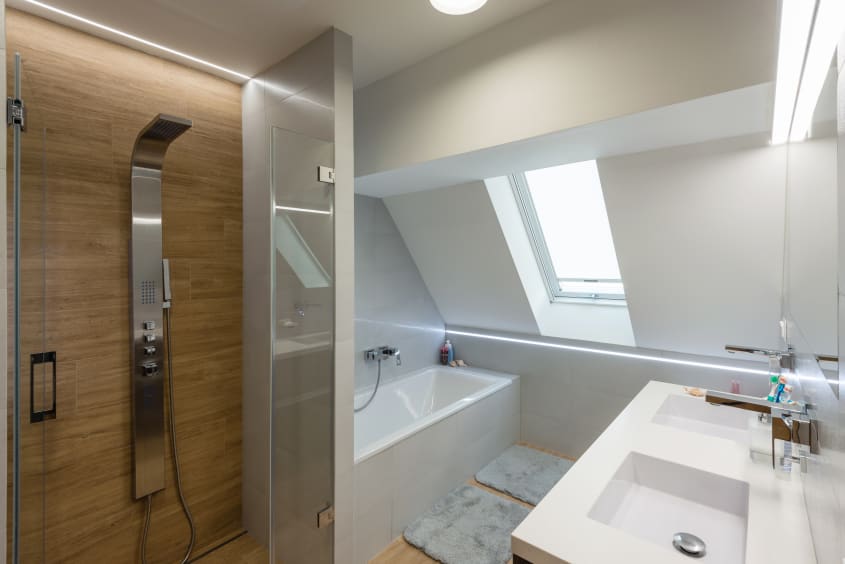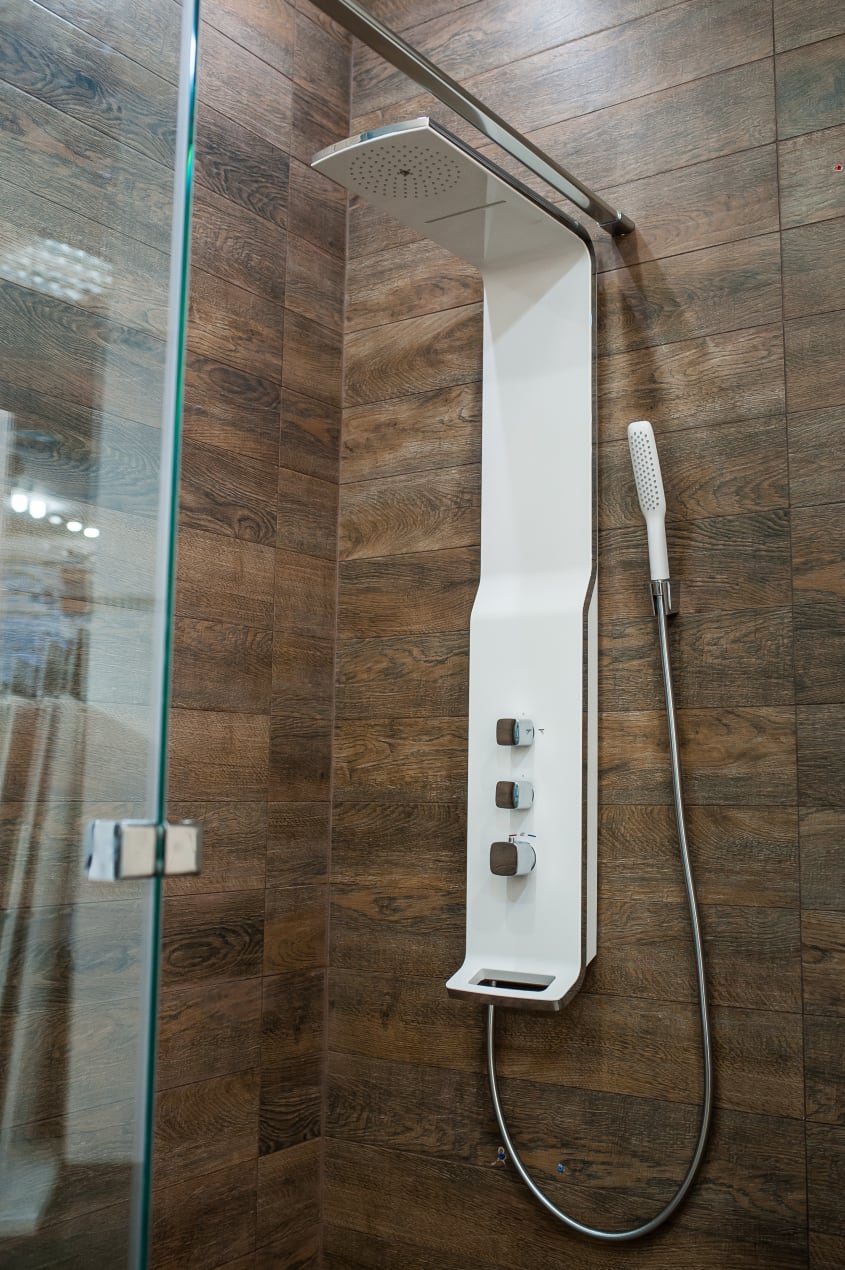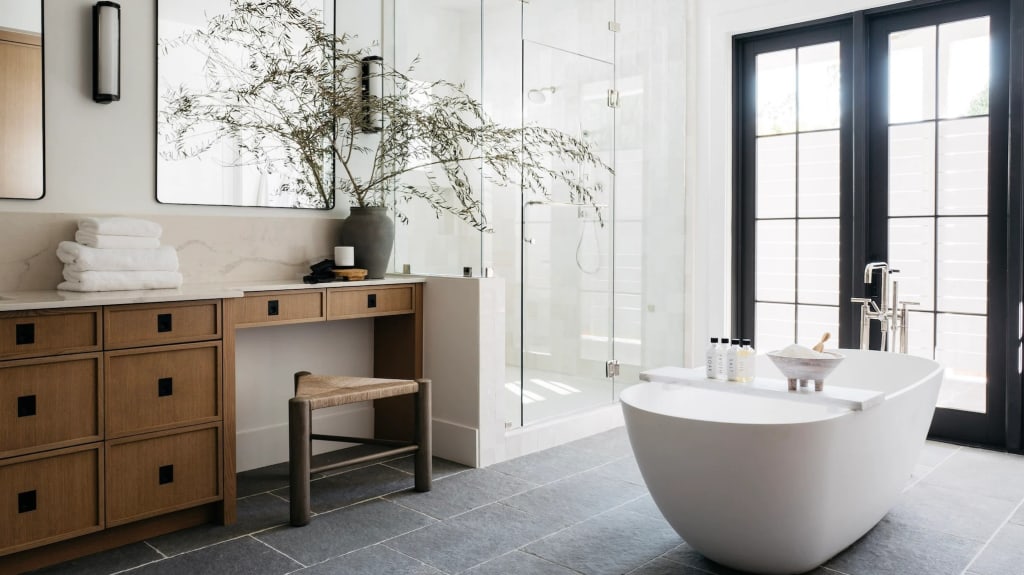If you want to give your bathroom a new look, changing your shower is a great option. So what type of shower should you choose? Walk-in showers, corner units, rainfall showers with hydromassage jets, tub showers… What should you consider when making your choice? Keep reading to learn how to pick the perfect shower for your bathroom!
Choosing the right shower model for your bathroom
When designing a stylish bathroom, consider the space you have available as well as the configuration of the room. For example, redesigning a bathroom lets you choose the footprint of your shower while converting your bathtub to a shower often means you have to work what you’ve got. Unsure of which style, size or material to choose? To ensure that you create an environment that’s pleasant for day-to-day use, choose a model that fits within the space available and meets your needs (as well as your budget).
Various shower models
Prefabricated showers
A one-piece shower is seamless, watertight and easy to install. Because of its large size, you’ll need to ensure that it’ll fit not only in your bathroom, but also through your doors and hallways.
A traditional shower comes in one piece with seams in the corners and along the top of the shower pan. It can fit in any space, regardless of its size. The base is raised to facilitate water drainage and plumbing fixtures are attached to the wall. A traditional shower has either a door or a shower curtain.
A modular shower comprises two or more smaller pieces, making it easier to transport than a one-piece shower. It can easily be installed in either a new or old construction.
While a modular corner shower takes up little space in the bathroom, it is spacious enough to use comfortably. Installation requires two walls and the shower itself can be customized to your preferences. Examples of this type of shower include round or neo-round corner showers, which have rounded corners, and neo-angular corner showers, which have three glass panels and two wall enclosures.
Hammam shower
A hammam shower is perfect for taking your relaxation to the next level. Aesthetically, it resembles a shower stall. Different sizes are available and some models fit into a corner while others are designed to be placed against a single wall. They often feature a combination of hydro jets and a steam bath. This is well-being at its finest!
Walk-in shower
The walk-in shower (or Italian shower) has been trending for several years now. With a clean and minimalist style, it fits any décor. And since the base is at ground level, it’s easily accessible for children, the elderly and individuals with reduced mobility. A walk-in type of shower isn’t suitable for every bathroom, however. The shower floor must be recessed and the shower pan is below the floor. It’s a better choice for when you’re building a new shower rather than renovating an existing one.
Tub shower
A tub shower is a good choice if you want the advantages of both bathtubs and showers but don’t have enough space for both. The bathtub is generally larger than average, making it easier to move around when you’re showering. And when you’re ready to relax, it’s also more comfortable than a traditional bath.
How to pick the right shower base?
The quality of a shower base should be evaluated based on four key criteria: material, watertightness, solidity and support. For instance, an acrylic base is popular because it’s durable, low maintenance and offers strong resistance to leaks. It’s an ideal choice to reduce the risk of leaks.
In contrast, a ceramic shower base requires more frequent cleaning (it's the joints!) and is visually appealing. It comes in a wide variety of shapes, colours and designs so you can easily bring your own personal style into this room.
You could cover the entire shower surface, including the base, with ceramic tile and extend tile above the bathroom vanity to create a backsplash. Maintaining visual continuity can be achieved by using the same pattern and colour.
Which shower size should you choose?
Start by assessing how much space you want and are able to devote to your future shower. Think about how you use it, as well as your bathroom furnishings. Do you prefer a fuller bathroom or a minimalist bathroom with smart storage solutions?
Consider the configuration of your bathroom as well. It makes sense to choose a shower that readily integrates into your existing bathroom. The various models available on the market are designed to fit a wide range of needs.
Corner showers are generally used in smaller bathrooms. Square showers are great for when you want to install the shower in a corner of the bathroom and still have some space. Rectangular showers are practical for longer rooms, while walk-in showers are particularly suited to bathrooms that have flexible space, due to the work that’s required for installation.
No matter what type of shower you choose, be sure to take all the necessary measurements at home before you start shopping!
Materials for your shower
What is the best material for the shower base and walls?
When it comes to the shower floor and walls, you need to consider the watertightness of the materials. Here are some of the materials that are more commonly used.
Ceramic shower
There are many advantages to a ceramic shower: durability, strength, ease of maintenance, as well as virtually infinite patterns and colours to choose from.
Acrylic shower
In addition to being affordable, an acrylic shower is durable, crack and mildew resistant, and easy to maintain. However, you’re more limited in terms of styles. Add a personal touch to the shower by incorporating ceramic tile on the walls.
Glass shower
If you have a small bathroom, a glass shower is the perfect way to make it feel more spacious. While glass is a durable material, it does require regular maintenance.
The shower can be fully glazed or it can sometimes feature a single pane of glass. Alternatively, you can opt for partitions that define the shower area, giving the space a modern touch.
Natural stone shower
Stone adds luxury and refinement to a shower. It’s a strong and durable material that comes in several shades, veins and patinas. Daily maintenance requires little more than a bit of soap and water.
Wood shower
A wood type of shower is warm and inviting. There are lots of colours and price ranges to choose from to fit your needs, too. That said, be sure to select a moisture-resistant wood and have a good ventilation system to prevent warping and mildew.
Why? Prolonged exposure to water can lead to warping, mould or premature degradation of materials.
One drawback, however, is the maintenance: a wood shower should be treated with oil or wax roughly every six months.
Shower heads
How to choose a shower panel?
First things first. Do a little research. Is that panel model you’re eyeing compatible with your hot water system? Pay attention to flow rate and pressure details as these could affect installation. Will you be able to install it yourself or will you need to hire a specialist?
Next, you should think about your showering habits. Do you want to save water? There are shower panels on the market that are equipped with thermostatic mixing valves, which help maintain a stable temperature and reduce wastage.
Some people prefer a classic shower panel that features a high, fixed shower head and handheld shower. This type of system is quite common. If you’re seeking a more relaxed experience, a hydromassage panel would be a better choice. Its massage nozzles are perfect for creating your own home spa experience. And it would completely work in a therapeutic Zen bathroom, which is currently a very popular trend. Ultimately, there are a wide range of features and designs to choose from.
Which shower head should I choose?
The shower head is an essential bathroom accessory. Here are a few of the most popular options available.
Fixed shower head
The fixed shower head is the most common shower accessory on the market. It’s often designed to work with the plumbing that’s already installed in your bathroom, making it a cost-effective option.
Handheld shower head
The handheld shower head is often used in addition to a fixed head or for washing kids in the tub. However, you can install it on a shower bar and use it as a high shower head.
Rain shower head
The rain shower head is installed overhead and gives the sensation of being in warm rain. It’s sometimes combined with LED lights to create a home light therapy session. Take note that a rain shower head requires plumbing work and is more costly.
In some bathrooms, different shower head models complement each other or work well together by combining multiple features into a single fixture. For instance, you could enjoy a focused spray from a handheld shower head positioned just below a fixed shower head.
Panel with body jets
The shower panel with body jets features massage jets incorporated along its entire length. You can use it as a hydromassage shower or as a classic shower. Some installation work may be required and it’s costlier than other models.
And what shower door should I choose?
The final question to consider is: how do you choose the ideal shower door for your space? Some doors are an integral part of the shower unit, though it’s often possible to adapt the configuration.
For example, a traditional model with three walls pairs well with a single or double sliding door, while an angled door is best suited for a corner shower. Prefer a walk-in shower? Frameless glass doors are frequently used, valued for their modern, refined look.
If you have a tiny bathroom, a sliding or folding door would be the best option, while a pivoting or swinging door is ideal for larger rooms.
A shower that suits your needs

Renovating a bathroom takes money and planning. Before you begin, think about your lifestyle, how you use the room and which materials would best suit your needs and budget. That way, you can be sure your bathroom will be as stylish as it is functional! To learn more, download our bathroom renovation guide.
Start a project


